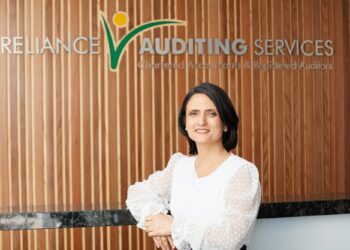Speaking at the SMSF Association Technical Summit 2021, Accurium head of education Mark Elllem said that choosing which ECPI method is ‘better” will depend on evaluating the exempt income proportions for the SMSF.
He noted an SMSF may find its ECPI claim materially affected by the ability to “choose” whether an asset is treated as a segregated current pension asset or not, if the SMSF has a time in the year where all of the fund is solely in retirement phase, but has a non-retirement phase account at other times.
“That’s one of the first requirements and we must have a period where the fund which is less than 12 months consists wholly of retirement phase benefits. If not, then we don’t have a situation where the fund has to use the segregated method,” Mr Ellem said.
“The second requirement is the fund doesn’t have disregard of small fund assets (DSFA), and if the fund does have DSFA, then it doesn’t have the option to use the segregated method; it will use the proportionate method for the entire year.
“Thirdly, consider if the fund has significant and irregular income and/or capital gains because we can see that if there’s significant income or lumpy income, that can make a difference to the calculation of ECPI depending on the choice that is made.”
Where there are significant and irregular income or capital gains earned at a time when the fund has non-retirement phase accounts, Mr Ellem said not treating assets as segregated current pension assets during a period of deemed segregation will generally produce a higher income exempt proportion.
“This is the result because by treating the period of deemed segregation not as segregated assets, that’s going to uplift the average pension liabilities as compared to total superannuation liabilities and result in a higher ECPI percentage,” he noted.
“Where there’s significant and irregular income or capital gains that’s earned at a time the fund is solely in retirement phase along with having those CGT events in a period of deemed segregation, then treating the assets held during that period of segregated current pension assets is going to produce an overall high level of ECPI.
“This particularly applies for CGT events because we know that a CGT event that occurs in relation to a segregated current pension asset is disregarded. If it’s a gain, it’s going to be ignored and we’re going to achieve 100 per cent exemption.”
However, Mr Ellem noted that the fund may also face different issues when it finds itself in a scenario where, instead of realising capital gains, it realises a net capital loss particularly in the period where the fund consists solely of retirement phase interest, a period of deemed segregation.
The rules state that a CGT event in relation to a segregated current pension asset are disregarded, which means that’s a positive for a capital gain and funds can effectively get it 100 per cent exempt.
“For a capital loss, it means that we’ve lost that capital loss because that CGT event is disregarded, so that loss is not available to offset against other accessible capital gains, nor is it available to carry forward to a later year,” he noted.
“Now if there’s significant irregular capital gains or other income earned at times when solely in retirement phase during that period of deemed segregation along with irregular capital gains or incomes at times when the fund is not solely in retirement phase, then it would depend on each individual scenario and funds will need to consider doing comparison calculations.
“If there are no significant irregular capital gains, while we still may do a comparison between the two choices, there’s likelihood of the outcome to be similar under both choices.
“Now, considering that applying the proportionate method is regarded as generally administratively simpler than applying the segregated method, then the proportionate method is most likely going to be the method chosen.
“Therefore, any assets held during a period of deemed segregated segregation will be elected not to be treated as segregated current pension assets so that the proportionate method could be used for the entire year.”
Is the choice that simple?
One of the main questions for SMSFs is the complexity of the choice when reflecting the outcome on ECPI calculations, according to Mr Ellem.
For example, a fund has reached a period from 1 July up to the end of January where there are mixed interests of retirement phase and non-retirement phase accounts. The fund is also reaching a phase where members have left the fund and there is one remaining member in the fund who is wholly in retirement phase.
“Since for the first part of that year there is mixed interest, is it simply just choosing to apply the proportionate method, and for the next half of the year from 1 February, applying the segregated method as this is effectively the current approach to calculating ECPI,” Mr Ellem explained.
“Or do I simply choose that for the entire year I’m going to apply the proportionate method to the entire year despite the fact there is a period consisting wholly of retirement phase interests. The trustees won’t use the segregated method for that period, they’ll just use the proportionate method for the entire year.”
Mr Ellem said the key is not just about choosing the calculation method to apply to a particular period.
“What the legislation is wanting the trustee to do is to make that choice on whether or not to treat an asset as being or not being a segregated current pension asset during a period the fund wholly consists of retirement phase interests,” he continued.
“It’s to look at each asset held during that period of deemed segregation and make a choice whether or not to treat it so it appears that we don’t have the default position for fund assets during that period. If they are by default a segregated current pension asset, if the trustee makes a choice, they’re only making a choice for that asset to not be treated as a segregated current pension asset.
“Under the draft legislation, it appears as though the trustees need to make the choice one way or the other; it doesn’t appear to be a default position. Now, remember this choice isn’t law yet, it is proposed to apply from the current 2021–22 income year and also the format or record-keeping requirements of the choice being made is still yet to be clarified.”


